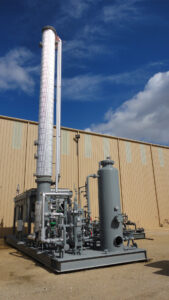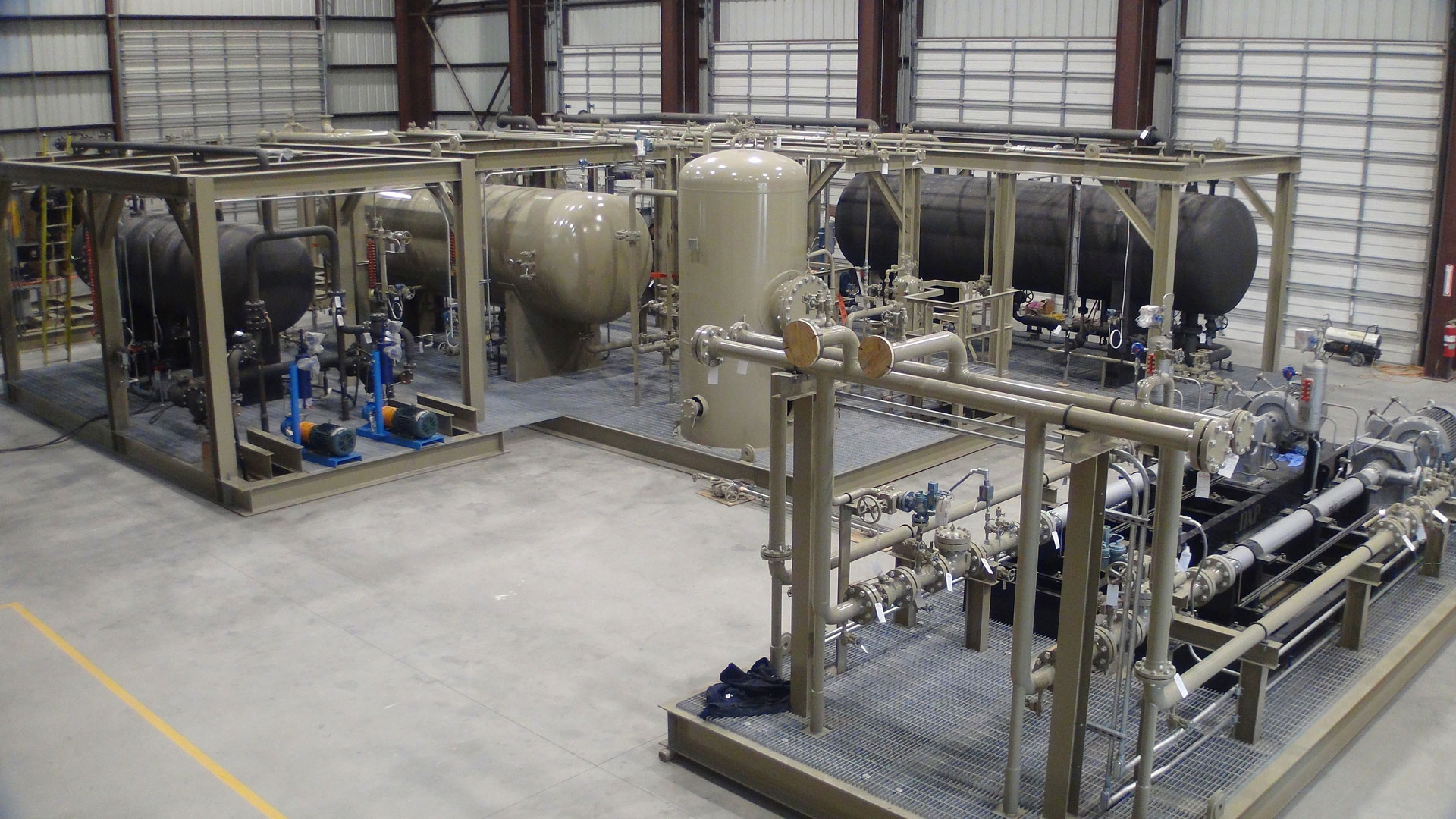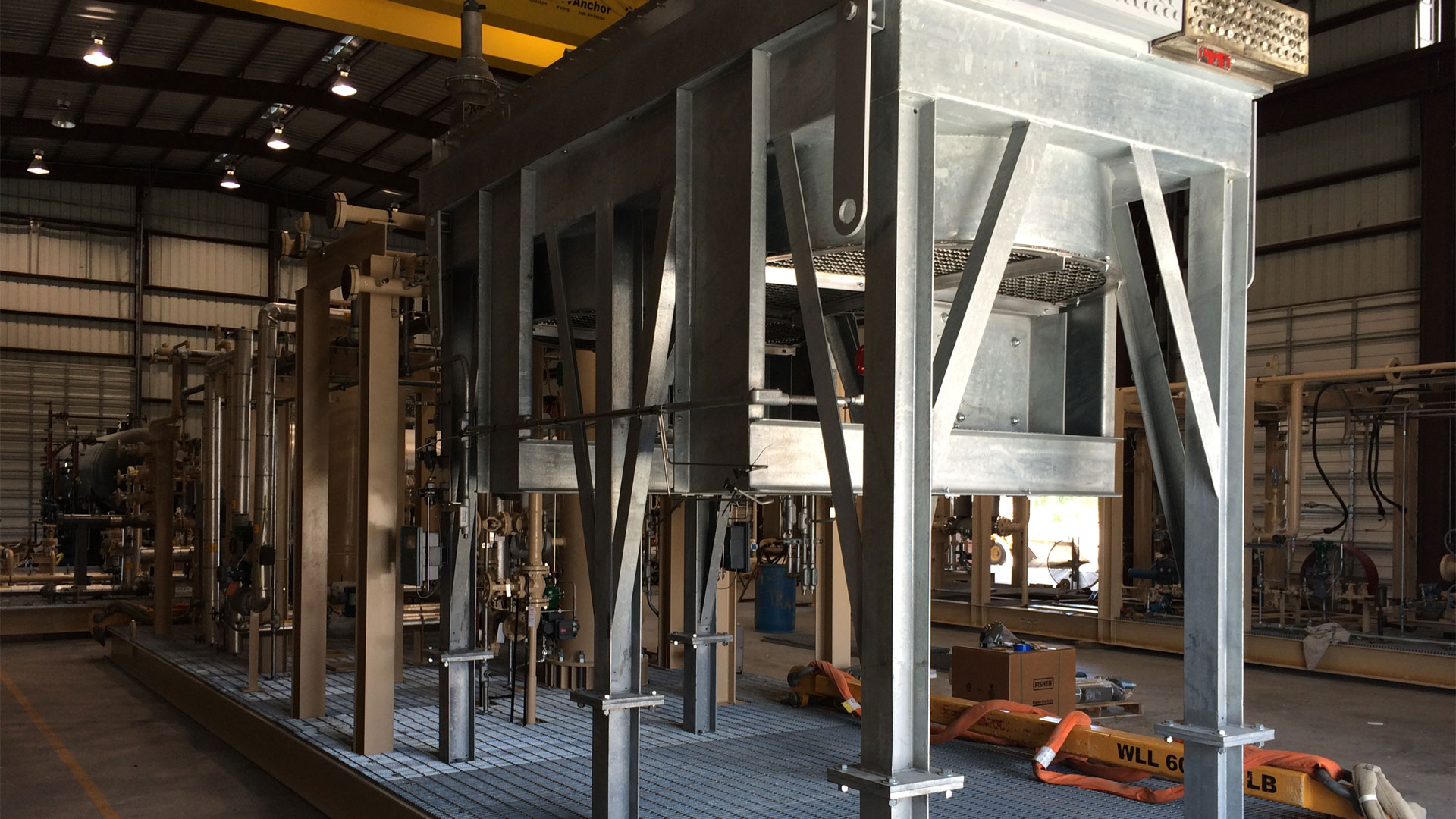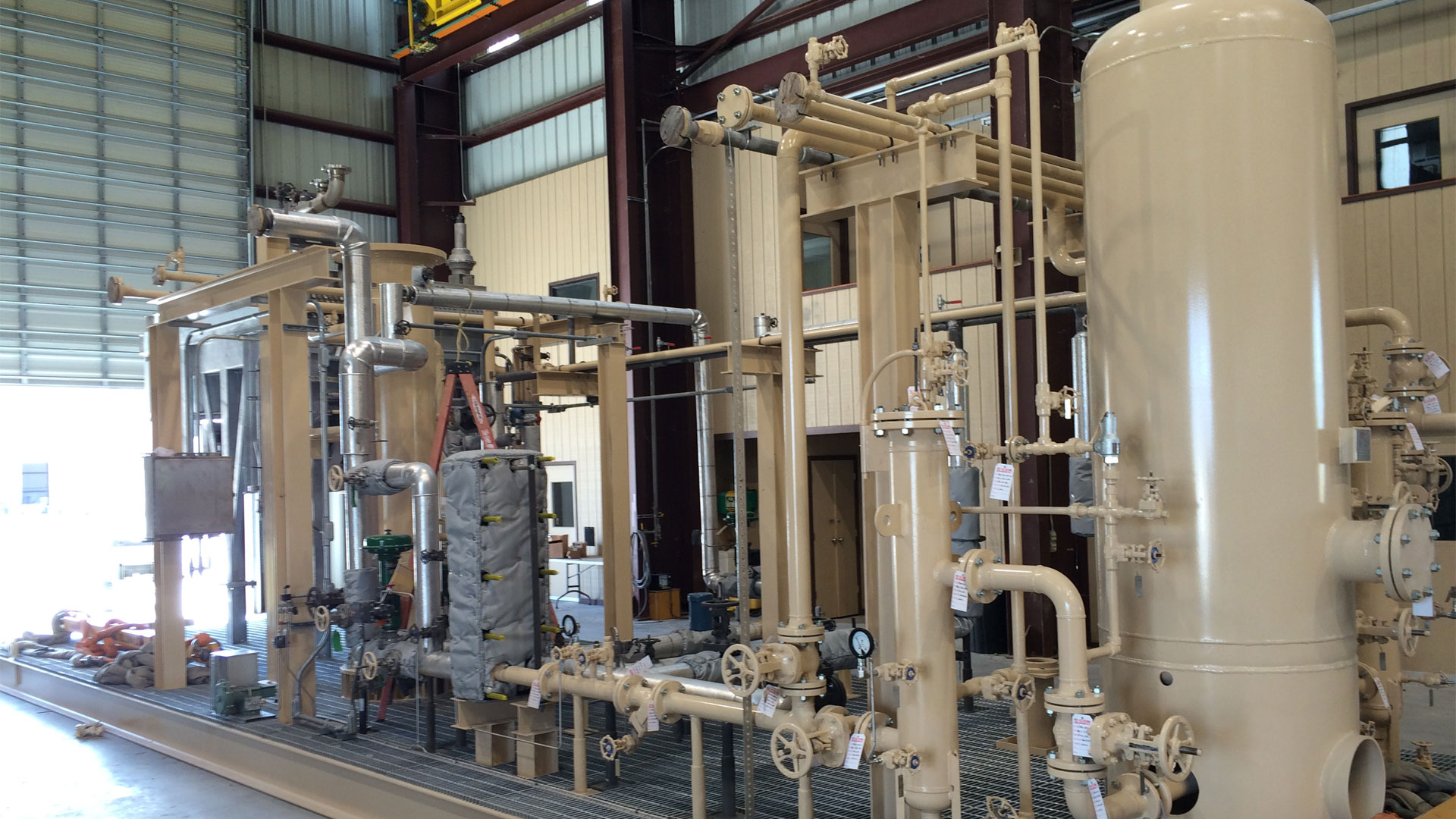Once a Design Basis has been established, S-Con can provide our Customers with an Amine Plant design to meet your specifications within a few hours. Provided with a Basis of Design, S-Con can work with whatever information you have available to develop estimates for the overall project scope, cost, and lead times.
 Amine Plants are used to remove contaminants such as carbon dioxide (CO2) and hydrogen sulfide (H2S) from natural gas streams. These contaminants are often referred to as “acid gas” components. Various amine products can be utilized to meet the product specifications required for a specific application, but all amines work on the same general principle of forming a chemical bond between the amine and the acid gases, thus removing these contaminants from the natural gas stream. The contaminant rich amine (“rich amine”) exits the natural gas treating section and is routed to the Amine Regeneration system, where the amine is stripped of the contaminants, by using heat and mass transfer to break the chemical bonds that were previously formed between the amine and the acid gases. The acid gases are then routed to disposal (Flare or Thermal Oxidizer), while the regenerated amine (“lean amine”) is recirculated back to the gas treating section to remove more acid gases from the inlet natural gas stream.
Amine Plants are used to remove contaminants such as carbon dioxide (CO2) and hydrogen sulfide (H2S) from natural gas streams. These contaminants are often referred to as “acid gas” components. Various amine products can be utilized to meet the product specifications required for a specific application, but all amines work on the same general principle of forming a chemical bond between the amine and the acid gases, thus removing these contaminants from the natural gas stream. The contaminant rich amine (“rich amine”) exits the natural gas treating section and is routed to the Amine Regeneration system, where the amine is stripped of the contaminants, by using heat and mass transfer to break the chemical bonds that were previously formed between the amine and the acid gases. The acid gases are then routed to disposal (Flare or Thermal Oxidizer), while the regenerated amine (“lean amine”) is recirculated back to the gas treating section to remove more acid gases from the inlet natural gas stream.



